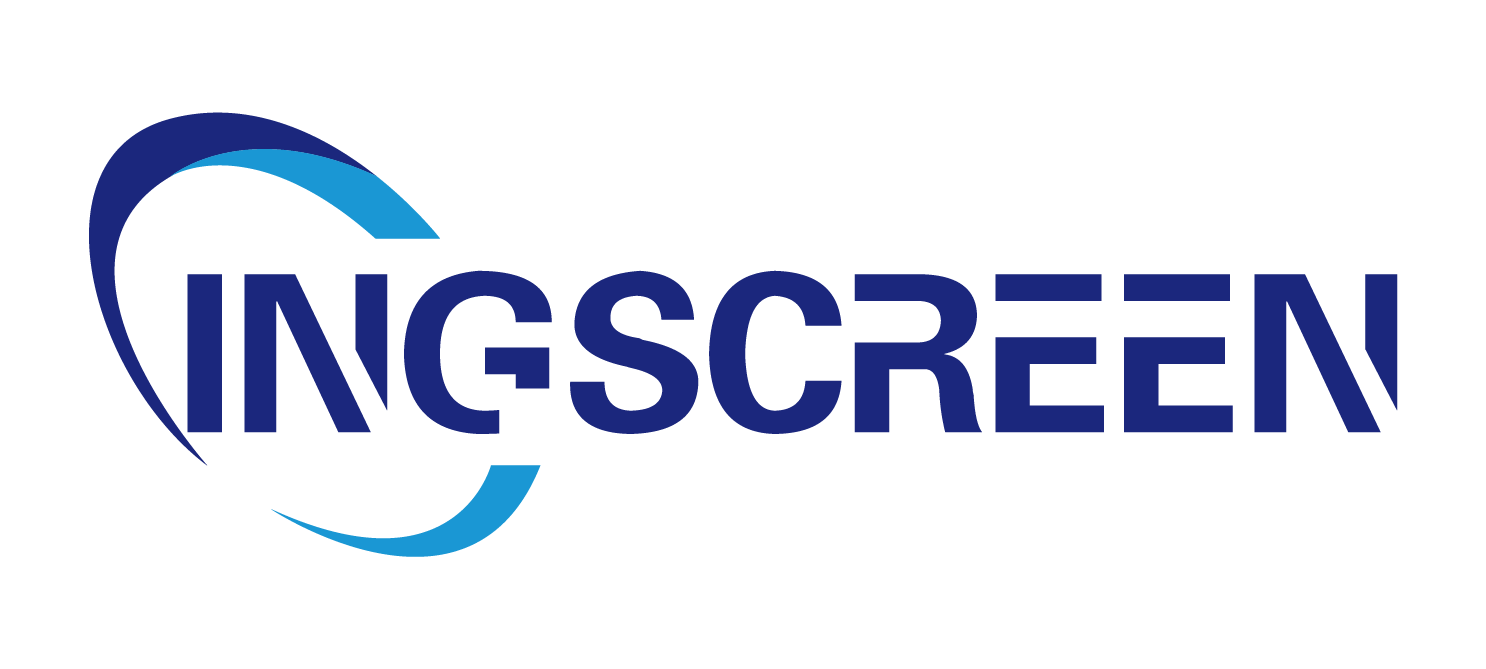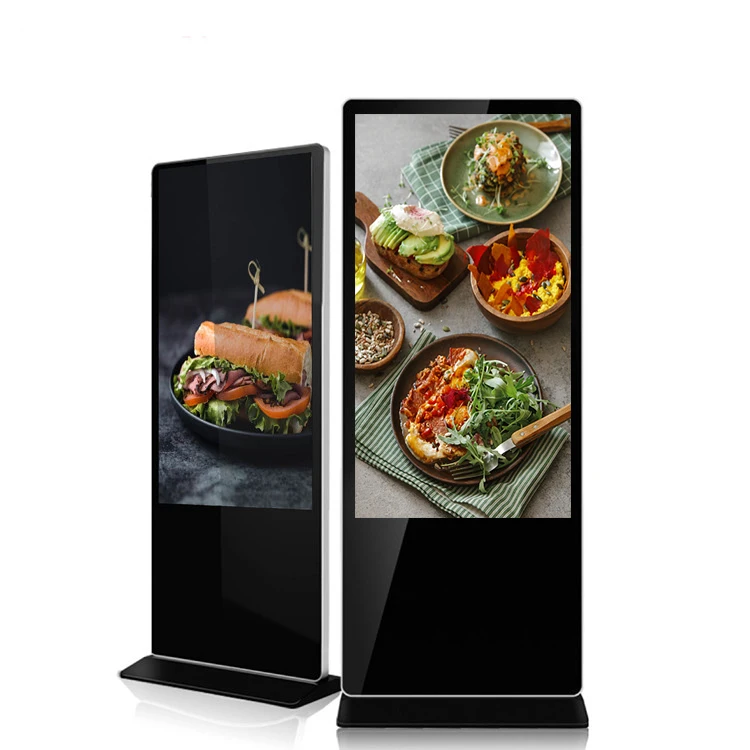Quomodo Scaenae a Se Factae Meliorem Faciunt Experientiam Clientium?
Kioscos auto-servicii in frequenti conspectu in tabernis, cauponis, castris avium, et multis aliis mercimoniis ad clientelas spectantibus. Hi machinae ad usum faciles clientibus permittunt negotia conficere—ut cibum ordinare, aut pro volatu consignare, aut pro mercibus solvere—nisi opus est auxilio operarum. Quamquam quidam verecundantur ne interpositio humana a tollatur, veritas est hi cibarii saepe experientiam clientum augere celeritate, commoditate, et personalitate meliorata. Haec narratio investigat modum quo cibarii se ipsum servandi modum experientiam clientum meliorem efficiant, atque cur in pretio sint apud mercimonios modernos, praesertim quod attinet ad celeritatem, commoditatem, potestatem, et aditum.
Quid sunt kioski self-service?
Kioscos auto-servicii sunt instrumenta electronica separata ad comparationem curandam clientium officia peragendi. Saepius habent tabulam tactilem, interfaciem amicam, et saepe componentes additicios ut lectores cardinum, typographos, aut scanneres. Secundum rem quaerunt, ciborium officia varia tractare possunt:
- Imperare et solvere : In thermis aut cauponiis, clientes cibos spectare, ordines emendare, et solvere directe ad ciborium possunt.
- Inire et consignare : In aeroportis, hospitiis, aut conventibus, ciboria clientibus permittunt inire, tabulas nauticas imprimere, aut tesseras colligere.
- Dilectio et peremptio mercimoni : In tabernis mercatoriis, ciboria clientibus permittunt res scandere, mercimonium conferre, et emptiones absolvere sine expectatione in acie.
- Notitia et investigatio : In compitis, aedificiis medici, aut museis, ciboria tabulas, directiones, aut commentarios de officiis praebent.
Kioskae autosesae modernae ita comparatae sunt ut sint perspicuae, cum instructionibus simplicibus et imaginibus claris quae clientes per singulos gradus ducunt, ita ut facile adhibeantur etiam ab iis qui non sunt periti technicorum.
Celerius Procedere et Minuere Expectationes
Una ex maximis rationibus qua kioskae autosesae emendent experientiam clientium est tempus expectationis minuendo. In locis frequentatis, longae lineae apud cassas aut mensas adhibendi possunt irasci clientes et eos etiam abire sine emptione facere. Kioskae autosesae remedia adhibentur hoc modo:
Plures Clientis Una Obruti
Quod attinet ad unum solum ministerium qui adiuvare potest solum unum clientem una in tempore, complura autonoma tabernacula operari possunt eodem tempore. Id significat plures clientes posse sua officia perficere parallela, minuendo exspectationis tempora. Ut exemplum, taberna celeris victualis cum quattuor tabernis autonomicis servare potest complures clientes simul, dum vetus tabula tantum unum vel duos potest tractare in tempore maximo.
Haec celeritas valde utilis est in temporibus occupatis—sicut prandii impetu, festorum emptionum, aut aeroportus inscriptionis temporibus—cum clientes impatientes sentire sunt. Minuendo tempus exspectationis, tabernacula iuvant clientes satisfactos et minus anxios sentire.
Procedurae Celeritati Perficiendae
Catacumbae automatae sunt ad processus simplificandos per eos in passibus claris et gradatim rumpendos. Exempli gratia, catacumba emptionum in loco praecipit clientes per puncta inspicienda, reductiones applicandas, modos pensandi eligendos, et acceptiones imprimendas—cuncta sine quaestionibus alternis aut erroribus in manualem introductum qui transactiones cum auxilio personarum tardare possunt.
In tabernis, catacumbae clientes permittunt mandata conficere (ut addere caseum ampliorem aut cebolas tollere) directe in tabula, quod saepe celerius est quam desideria ad personalem enarrant. Interface catacumbae nullas particularum praetermittit, qua ex re errorum in mandatis occasio minuitur quae moras et iracundiam efficit.

Minuendae Errationes Humanae
Membra staff sunt humana, et errores—sicut ordinem erroneam ponere, pretia male computare, vel rogationem clientis oblivisci—accidere possunt, praesertim tempore festo. Hi errores non solum celeritatem minuunt, sed etiam tempus ad corrigenda indigent, augendo exspectationis tempora pro omnibus. Tabularia autonoma hos errores minuunt per:
- Permittendo clientibus ordines vel detalia sua inserere, veritatem assecurando.
- Automate computando pretia, tributa, et remissiones, errores arithmeticos tollendo.
- Clarae confirmationi praebendo antequam transactionem consummare, ut clientes errores ante procedendi finem recognoscere et corrigere possint.
Pauciores errores significare celerius, expeditius ministerium et tutiorem experientiam clientibus.
Convenientiam et Flexibilitatem Augendo
Tabularia autonoma potestatem in manibus clientium ponunt, eorum experientiam convenientiorem et flexibiliorem efficiendo. Nullo pacto ad horologium vel ad praesentiam staff accommodando, clientes cum tabulariis suo arbitrio interagere possunt:
disponibilitas 24/7
Multiplura tabernacula autoserica per noctem operantur, ut clientes negotia conficiant etiam cum ministri non adsunt. Exempli gratia:
- Mercatus vespertinus autoserico emptores sinit mercari et solvere noctu sero aut mane valde.
- Aeroporti tabernaculum viatores sinit adsciscere ad volatus matutinos antequam ministri adveniant.
- Pharmaceutici tabernaculum clientes sinit praescriptiones accipere extra horas mercationis solitas.
Haec perpetua adfabilitas magnopere commoda est pro clientibus operosis aut non traditionalibus temporibus, ut semper adhibere possint ministeria cum maxime opus est.
Optiones Personalizandi
Tabernacula autoserica plerumque plures optiones adiumento praebent quam cum ministerio. Exempli gratia:
- Tabernacula cauponum clientes sinit cibos componere cum ingredientibus specificis, quantitatibus, aut propositis victualibus (sicut veganis aut sine glutine), cum clarae imagine cuiusque electionis.
- Bivii venditionis detinent clientes ut varia producta conferant, iudicia legant, vel disponibilitatem in magno vel coloribus aliis ante emitendum explorent.
- Bivii aditorii in hospitiis peregrinos electionem cubiculi (ut superioris tanti vel non fumandis) si opus est praebent, ut magis domini manutentionis sint.
Hoc gradus adaptationis facit clientes sentire se curam geri de necessitatibus, qua experientia magis personalis et iucunda sequatur.
Minuendo anxiem societatem
Quibusdam clientibus, cum ministerio interloqui anxiem parit - sive propter verecundiam, barriera linguae, sive celeriter se agitari sentiunt. Bivii sese ipsorum administrandi praebent subtiliorem alternativum, clientes ut negotia suo tempore absolvant sine interloquio humano.
Exempli gratia, cliens qui loquendi lingua laborat, usupotest machinae multilinguis ad processum facilem peragendum. Cliens verecundus tempus sumere potest ad ordinem accommodandum sine timore cohortis post se urgentis. Haec inclusio omnibus clientibus facit ut in negotiis sese tutiores et confidentiores sentiant.
Facilitatem omnibus clientibus augere
Machinae autodidactae ita sunt factae ut aditus facile sit, itaque sunt instrumenta utilis ad clientes variis indigentias. Facilitates quae aditum meliorem praebent sunt:
Subsidium multilingue
Multae machinae autodidactae plures linguas offerunt, clientibus non loquentibus linguam localem permittentes eorum lingua materna cum interficie communicare. Hoc confusione minuit et omnibus clientibus certum facit processum intellegere, sive cibum ordinant, sive advenient, sive emunt.
Subsidia visus et auditus
Tabernacula saepe praebent instrumenta visualia ut insigne, imagines, et animationes gradatim quae processum faciliorem reddunt, praesertim pro clientibus qui difficultates legendi habent. Aliqua tabernacula etiam praebent praeceptiones auditas, quae clientibus cum difficultatibus visus rem per se perficiendam adiuvant.
Interfacies Regulabiles
Aliqua tabernacula hodierna habent schermata regulabilia (ut adjustmentem altitudinis) aut schermata tactu movenda quae cum instrumentis auxiliis operantur, ita ut aditus ad eaque omnibus sit, quaecumque facultas corporis sit.
Curam accessibilitatis prioribus locis collocando, tabernacula autoserica negotia adiuvant ut experientiae magis inclusivae creentur quae ad latiorem clientelam spectent.
Praestando Servitium Constantem et Fidum
Constantia est clavis ad bonam experientiam clientis. Clientes eundem servitii gradum expectant quotienscumque cum negotio interagunt, et tabernacula autoserica hoc praestare adiuvant eo quod:
Processus Normando
Cibarii securi eundem graduum seriem sequuntur pro omnibus clientibus, ut nemo optionum aut informationum careat. Ut exemplum, omnes clientes qui cibarium securum in taberna adhibent eadem cernent: eadem elementa in menū, eadem optionum praeparandi potestas, et eadem pecuniae summa, ut minus valeat inconsimilis ministerii ratio, quae provenire potest, cum alii alia procedendi ratione utantur.
Conservare Bonitatem Tempore Maximi Utriusque
Tempore occupationis maxime, servi fortasse festinant ut clientibus satisfaciant, brevioresque interitus seu praetermissae minuti aeque eveniunt. Cibarii tamen securi eandem diligentiae et curae rationem servant, quamvis rerum status sit difficilis. Clientes sibi ipsi tempus capere possunt, mandata sua considerare, et auxilium postulare (per pulsationem butonis) si opus sit, ut idem ministerii bonitatis statim fiant, etiam tempore maximi utriusque.
Praebere Informationem Clarissimam
Catacumbae informationem claram et recensentem de mercimoniis, pretiis et politiis praebent. Ut exemplum, catacumba mercatoria niveles magazini in tempore reali ostendere potest, ut sciant clientes an res sit disponibilis antequam eam in carrum suum adiiciant. Catacumba hoteles potest tempus discessus aut optiones parkingis explicare, ut postea confusio et quaestiones minuantur. Haec transparencia clientes iuvat ut decisiones informatas capiant et delectiores sint in suis electionibus.
FAQ
An difficiles ad utendum sunt catacumbae autonomae pro senioribus?
Non, plerumque catacumbae autonomae ita factae sunt ut facilis usus sit, cum bottonibus simplicibus et magnis et instructionibus claris. Plures etiam monitus adiutorios vel optionem 'loqui cum ministerio' includunt si auxilium opus sit. Seniores saepe catacumbas facile utendas inveniunt postquam eas probaverunt, praesertim in rebus repetitis sicut discessu.
An catacumbae autonomae locum servorum humanorum supplent?
Minime, eos adiuvant. Orae negotia peragunt, ut operarii ad res difficiliores customerum attentionem conferant, ut difficultates solvant, consilia dent, aut opem ferant in petitionibus specialibus. Haec combinatio automati et humanae auxilii saepe meliorem servitium efficit.
Num automata curationis sibi utebantur resiliis aut querelis uti possunt?
Quaedam automata simplices resilius tractare possunt (ut nomen et rem in codice quaesitum), sed difficultates complexiores saepe adhuc auxilium operariorum requirent. Automata saepe "auxilium" nivationem includunt, quae clientes ad operarium pro querelis aut problematis connectit, ut difficultates celeriter solvantur.
Num automata curationis sibi omnibus rationibus pecuniae uti accipiunt?
Plurima recentiora automata cartas credendi/debiti, pecuniae rationes mobiles (ut Apple Pay aut Google Pay), et interdum nummos recipiunt. Manifeste methodos pecuniae acceptas ostendunt, ut clientes antequam processum incipiant sciant quid exspectent.
Quomodo automata curationis sibi data customerum protegunt?
Negotia digna usant gazzophylaciis tutis cum encryptione ad protegendum informationem de pecunia et data personalia. Gazzophylacia saepe habent functiones ut lectores cartarum qui data non servant et schermata quae informationem sensitivam (sicut PPNs) occultant ab aspectatoribus.
Index Rerum
- Quid sunt kioski self-service?
- Celerius Procedere et Minuere Expectationes
- Convenientiam et Flexibilitatem Augendo
- Facilitatem omnibus clientibus augere
- Praestando Servitium Constantem et Fidum
-
FAQ
- An difficiles ad utendum sunt catacumbae autonomae pro senioribus?
- An catacumbae autonomae locum servorum humanorum supplent?
- Num automata curationis sibi utebantur resiliis aut querelis uti possunt?
- Num automata curationis sibi omnibus rationibus pecuniae uti accipiunt?
- Quomodo automata curationis sibi data customerum protegunt?




